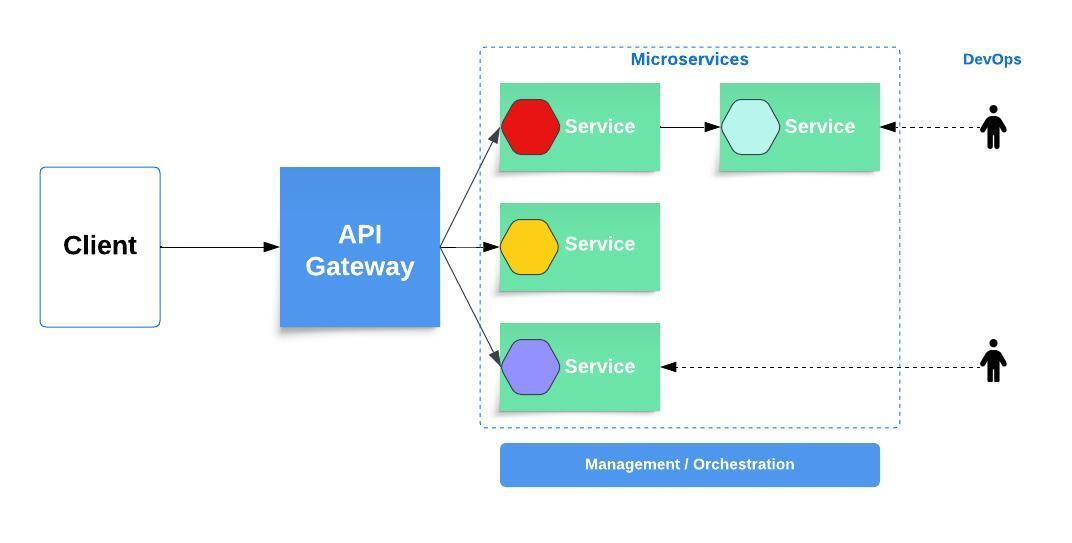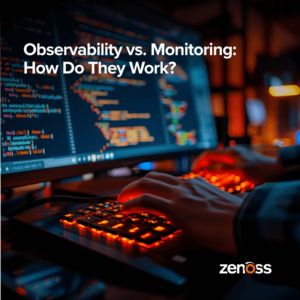Guest Contributors: Fayçal Noushi, Oumaima Naami & Amine Essahfi of Zen Networks
In today's fast-paced digital world, the reliability and performance of IT infrastructure are critical to business success. Monitoring technology plays a pivotal role in ensuring that systems and networks operate seamlessly, and one such technology is Zenoss. This blog provides an in-depth look at Zenoss technology and sheds light on the importance of event-driven architecture in modern monitoring.
Monitoring: Definition & Uses
Monitoring is the process of observing and tracking various aspects of an environment to ensure that systems operate optimally. It serves several crucial purposes:
- Performance Optimization: Monitoring identifies performance bottlenecks, enabling organizations to fine-tune their systems for optimal efficiency.
- Issue Detection: It detects anomalies and issues in real time, allowing for immediate action and reducing downtime.
- Capacity Planning: Monitoring helps organizations anticipate resource demands and scale their infrastructures accordingly.
- Security: It provides insights into potential security threats, facilitating timely responses to mitigate risks.
Introduction to Microservices
Modern IT environments often rely on microservices architecture, which involves breaking down complex applications into smaller, interconnected services. This approach enhances scalability and flexibility but introduces challenges in terms of monitoring.
EDA: Event-Driven Architecture
Event-driven architecture (EDA) is a crucial component of microservices-based systems. In EDA, events (such as system alerts, log entries or user actions) trigger responses or processes within the system. This architecture is event-centric and promotes loosely coupled components, making it ideal for dynamic, distributed systems.
EDA offers several advantages in monitoring microservices:
- Real-Time Responsiveness: EDA enables immediate responses to events, allowing for faster issue resolution.
- Scalability: As systems grow, EDA can handle increased event traffic by distributing processing across multiple components.
- Flexibility: EDA supports adaptability and can easily accommodate changes in the monitoring ecosystem.
Pub/Sub Pattern
Within EDA, the publish-subscribe (pub/sub) pattern is fundamental. In this pattern, publishers generate events, and subscribers register their interest in specific types of events. When an event occurs, the publisher notifies all interested subscribers, ensuring relevant parties are informed.
Case Study: EDA-Enabled Alerting & Monitoring Solution
An event-driven architecture, including Zenoss technology, creates an effective alerting and monitoring solution for a complex telecommunications network.
Scenario
In a telecommunications network, multiple critical components, including home location registers (HLR), Sigtran and Diameter nodes are responsible for handling subscriber information, signaling and authentication. Ensuring the optimal performance of these components is essential for maintaining network reliability and quality of service. The network also generates a continuous stream of events, such as system status changes, traffic spikes and error occurrences.
Implementation
- Event Flow to Kafka: Events generated by HLR, Sigtran and Diameter nodes are sent to a Kafka cluster. Kafka serves as a high-throughput, fault-tolerant event streaming platform that can handle the vast volume of events generated in real time.
- OpenSearch for Ingestion: Kafka forwards the events to an OpenSearch cluster, where they are ingested into multiple indexes. Each index corresponds to a specific category of events, allowing for efficient organization and retrieval of data.
- Zenoss Integration: Zenoss is seamlessly integrated into the monitoring ecosystem. It connects to the OpenSearch endpoint and retrieves metrics created from the various event indexes.
- Threshold Application: Zenoss applies dynamic thresholds to the retrieved metrics, using sophisticated algorithms that take historical data and network conditions into account. These thresholds define acceptable performance ranges for the network components.
- Alerting Logic: Zenoss is configured to send alerts to different teams based on the severity of the breach of predefined thresholds. For instance, minor performance deviations may trigger alerts to the network operations team, while critical issues might escalate to the network engineering team.
Benefits
- Real-Time Monitoring: Zenoss provides real-time insights into the performance and health of critical network components.
- Data Organization: OpenSearch’s indexing system ensures that event data is well organized, making it easy to locate and analyze specific events when needed.
- Dynamic Thresholds: The Zenoss adaptive thresholding ensures that alerts are based on current network conditions, reducing false alarms and enhancing overall reliability.
- Team-Specific Alerts: The ability to route alerts to different teams based on severity ensures that the right personnel are informed promptly, streamlining incident response.
- Scalability: The solution scales effortlessly as the telecommunications network expands, handling the increasing volume of events without compromising performance.
The combination of Zenoss technology and event-driven architecture in this telecommunications network ensures that critical network components are continuously monitored and potential issues are promptly addressed. The dynamic thresholding and intelligent alerting mechanisms enhance the network's overall reliability and quality of service, making it a robust solution for modern telecommunications operations.










